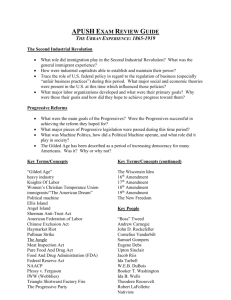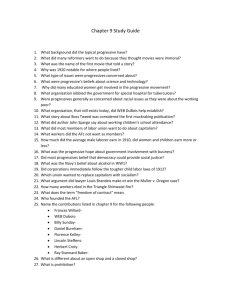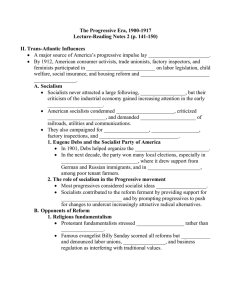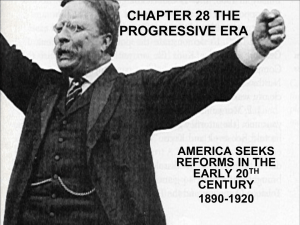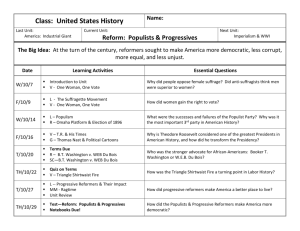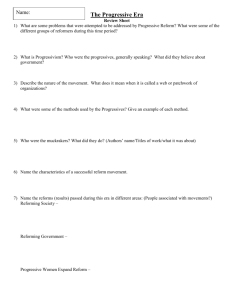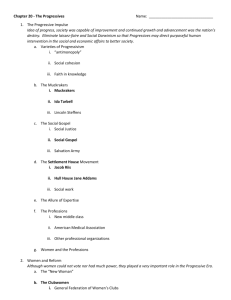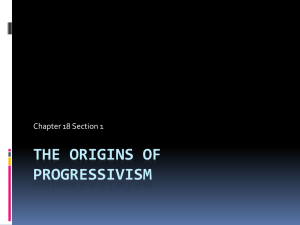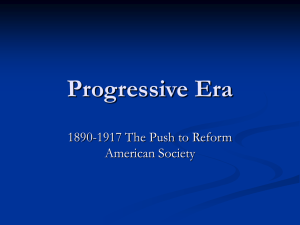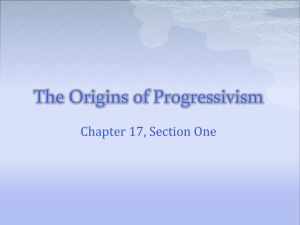REVIEW FOR HONORS U
advertisement
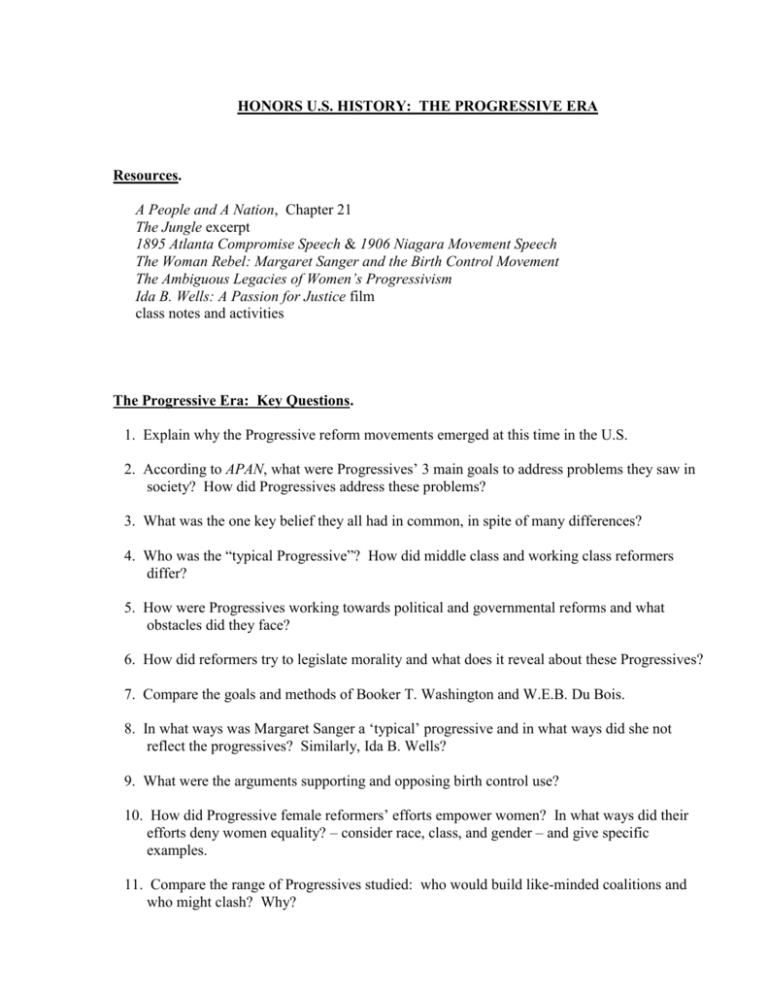
HONORS U.S. HISTORY: THE PROGRESSIVE ERA Resources. A People and A Nation, Chapter 21 The Jungle excerpt 1895 Atlanta Compromise Speech & 1906 Niagara Movement Speech The Woman Rebel: Margaret Sanger and the Birth Control Movement The Ambiguous Legacies of Women’s Progressivism Ida B. Wells: A Passion for Justice film class notes and activities The Progressive Era: Key Questions. 1. Explain why the Progressive reform movements emerged at this time in the U.S. 2. According to APAN, what were Progressives’ 3 main goals to address problems they saw in society? How did Progressives address these problems? 3. What was the one key belief they all had in common, in spite of many differences? 4. Who was the “typical Progressive”? How did middle class and working class reformers differ? 5. How were Progressives working towards political and governmental reforms and what obstacles did they face? 6. How did reformers try to legislate morality and what does it reveal about these Progressives? 7. Compare the goals and methods of Booker T. Washington and W.E.B. Du Bois. 8. In what ways was Margaret Sanger a ‘typical’ progressive and in what ways did she not reflect the progressives? Similarly, Ida B. Wells? 9. What were the arguments supporting and opposing birth control use? 10. How did Progressive female reformers’ efforts empower women? In what ways did their efforts deny women equality? – consider race, class, and gender – and give specific examples. 11. Compare the range of Progressives studied: who would build like-minded coalitions and who might clash? Why? Key Terms. Florence Kelley muckrakers initiative Socialists 17th Amendment Social Gospel Movement 1910 Mann Act Atlanta Compromise NAACP “the woman movement” Charlotte Perkins Gilman suffrage Teddy Roosevelt Pure Food and Drug Act William Howard Taft Woodrow Wilson Clayton Anti-Trust Act Federal Farm Loan Act Progressives Upton Sinclair referendum Eugene V. Debs protective labor legislation WCTU WEB Du Bois Niagara Movement Ida B. Wells women’s clubs Margaret Sanger Carrie Chapman Catt “trustbuster” United Mine Workers strike 16th Amendment New Nationalism FTC Adamson Act social institution Ida M. Tarbell recall Robert M. La Follette Muller v. Oregon 18th Amendment Booker T. Washington “Talented Tenth” Society of Amer. Indians feminism 19th Amendment Alice Paul Meat Inspection Act Gifford Pinchot Progressive Party New Freedom Federal Reserve Act Election of 1916 Honors U.S. History - Textbook Noteguide – The Progressive Era 1895-1920 I. Intro and Progressive Impulse 599-605 - Florence Kelley - 3 goals of Progressives - urban v. rural reformers; middle-class reformers - muckrakers - reforms to the political process - scientific management and reform - upper-class reformers, working-class reformers, socialists - opponents of Progressivism II. Governmental and Legislative Reform 605-608 - reforming corruption in government - Progressive governors; 17th Amendment - Labor reform; Moral reform III. Challenges to Racial Discrimination 613-615 - Booker T. Washington and W.E.B. Du Bois - Society of American Indians IV. Challenges to Sexual Discrimination 616-619 - “the Woman Movement”; Women’s Clubs; Feminism - Margaret Sanger - Suffrage V. Theodore Roosevelt and the Presidency 619-623 - regulation - conservation - Panic of 1907 - Taft Administration VI. Woodrow Wilson and Conclusion 623-626 - New Nationalism and New Freedom - Business Regulation; Tariff and Tax Reform - Election of 1916
